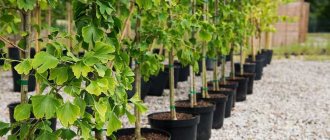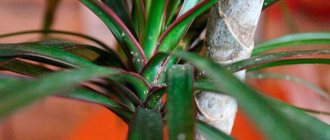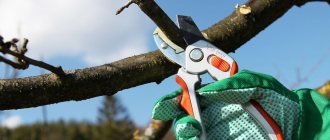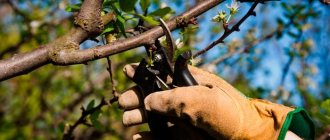Spring and autumn pruning of trees is one of the most important activities that cannot be postponed until later. Compliance with deadlines and correct pruning schemes will help maintain the health of fruit trees and increase their productivity.
Proper pruning of garden trees will also help to form a crown and a strong trunk, on which the further development of the plant and its productivity depend.
In addition, pruning stimulates the growth of new healthy branches, which is especially useful for mature trees.
Crown formation: the need for
Fruit-bearing crops planted in your own garden or plot, next to and around the house, require comprehensive and regular care. Simple and uncomplicated agricultural technology assumes that the owner of the garden plot will carry out the correct pruning of fruit trees necessary to achieve the following goals:
- regulation of growth and volumes of fruiting;
- improving the quality of the resulting fruits with increasing yields;
- optimization and improvement of crown illumination;
- rejuvenation of the plant and removal of old or diseased shoots.
It is important to include not only crown formation procedures in the complex for caring for fruit crops, but also soil care and the implementation of pest control measures.
To regulate the growth and development of trees, gardeners recommend using not only pruning, but also twisting and tying technologies, changing the direction of branch growth.
How does circumcision affect fruit growth and formation?
The growth energy of the buds on a branch is different: there are weak buds, and there are strong ones.
The bud under the pruning site becomes the main one for shoot growth (apical). That is, the strength of growth of the continuation shoot depends on which bud remains under the pruning site.
This is how growth is regulated:
- when circumcised on a weak bud: the continuation shoot grows poorly;
- when pruning heavily or without pruning at all: intensive shoot regrowth.
In an annual shoot, the apical bud has great growth power. Also, strong buds are located in the middle of the shoot, and weakened ones are located between them and the apical one. The distribution of buds by strength depends, among other things, on the grade. In some varieties, the buds located at the base have low growth energy.
Therefore, to enhance growth, it is necessary to leave the apical bud or cut the shoot in the middle; to weaken it, remove the terminal bud or cut the shoot above the bud at the base. The time of pruning also affects the growth rate. If it is done in February, growth becomes intense, if in March it slows down.
Removing some shoots leads to a more rational redistribution of juices and, as a result, an increase in fertility. Thanks to pruning, productive branches receive more light, and shaded, low-performing branches that only waste the vitality of plants are removed. This also promotes faster growth and higher yields.
What is tree branch pruning?
Looking at the wide variety of photos of fruit tree pruning offered, you can notice the simplicity and accessibility of this method of caring for green spaces.
The not complicated and fairly easy procedure provides different effects, making it possible to expand the range of measures for caring for fruit-bearing crops:
- growing trees of the required size with a certain trunk strength to support large fruits;
- maintaining the best fruiting conditions for a long time with normal lighting of the branches and easy harvesting;
- timely formation of ovaries and fruits due to the correct and uniform distribution of liquid;
- compliance with the regularity and timing of fruiting under changing climatic and weather conditions.
The purpose and required results of crown formation are determined individually; they are influenced by the biological characteristics of fruit plants. Before choosing equipment and technology, the type and method of implementing agrotechnical procedures, a beginning gardener should definitely take into account the breed and variety of the cultivated plant.
Methods used to form trees
Caring for a garden brings a lot of pleasure to those who strive for order and set the goal of increasing the yield of fruits and berries. Modern gardeners know the two most common ways of carrying out the shortening procedure, which have their own differences and characteristics and are carried out to achieve different goals:
- shortening is pruning and partial removal of the upper parts of already formed shoots;
- thinning, cutting and complete removal of individual shoots and branches, rosettes of branches to reduce the level of crown thickening.
When carrying out both activities, positive changes are observed in the process of plant growth, due to the redistribution of liquid and nutrients.
Depending on the chosen technique, intensive growth of lateral branches and shoots is caused, which contributes to the correct formation of the main branches and increases their water-conducting ability.
The most famous pruning techniques for beginners
Target orientation helps you choose a technique that allows you to implement the task as accurately as possible; it is recommended that you familiarize yourself with the existing methods:
- bud cut;
- ring cut;
- side branch cut.
For each crop, its own timing for pruning fruit trees is selected, subject to the selection of the correct technique and type of implementation of the activity.
Timing of the procedure: how to schedule
Maintaining the fruiting function requires the mandatory formation of the crown, but the schedule for such work varies for certain crops. To ensure that each tree branch receives sufficient nutrition and the necessary lighting, different types of pruning are carried out depending on the season and climatic conditions:
- winter chasing, carried out during the dormant period of trees and necessary to prepare them for the spring season;
- spring, the most common option for garden care, helps increase productivity and improve the health of the tree;
- autumn, used for preventive and sanitary care, the technology is similar to other types of work.
Summer pruning of fruit trees is the least common practice, and can be done for decorative, sanitary and preventive purposes. In summer, vegetation processes are most active in trees, and experienced gardeners recommend not disturbing the natural conditions for the growth and development of cultivated plants.
When to prune trees?
Never prune trees during periods of sap flow.
Periods of extreme heat should be avoided.
Pruning is done while the tree is entering or is already in vegetative dormancy.
Fallen leaves signal that the tree has entered a dormant state, and this means that the right moment has come .
It is important here not to wait until frost sets in, because... It is not recommended to prune trees in frosty weather.
But there is also “green pruning,” which is done from spring to summer to remove excess growth from very lush plants such as peaches.
Features of crown formation in old trees
Standard autumn pruning of fruit trees requires careful attention to the age of the plants being treated.
Old trees do not need to be shortened; thinning techniques are most often used for them, with pruning of entire links and branches; health procedures help to increase the level of fruiting.
Cucumbers in the open ground - tips and secrets of growing, planting features and ways to tie them correctly (90 photos + video)Peppers in a greenhouse: tips for growing, growing and caring for peppers in greenhouse conditions (110 photos + video)
Apple varieties - how to choose the right ornamental and fruit apple trees. 100 photos of the main types of apple trees
Features of pruning an apple tree depending on the time of year
At different times of the year, apple trees are pruned for different purposes.
Spring pruning of apple tree
In spring, apple trees of all ages are pruned until there is no sap flow and the buds begin to swell. Spring pruning in central Russia begins in late March, in the northern regions - in April.
The sequence of actions for spring pruning is as follows:
- In spring you can clearly see which branches have frozen. Cut them out because they will no longer bear fruit. If you have any doubts whether a branch is frozen, cut off a small piece from it. If the branch is alive, then on the cut it is white and a green cambium is visible near the bark. If the cut is dark in color, the branch is frozen.
You can distinguish a living apple tree branch from a frozen one by the color of the cut.
- Then trim off any branches that grow at an acute angle to the center of the tree. They will take strength upon themselves, and the fruits will be of worse quality.
- Also trim off branches that have grown inside the crown. After sanitary pruning, the thinned crown will receive more sunlight and air.
- Cover the cut areas with drying oil-based paint.
In spring, you should not use garden varnish. At low temperatures it loses its plasticity and is difficult to apply to the cut area. Even if you manage to apply garden varnish, it may fall off and the apple tree will be left without protection from infection. It is best to paint over the cut area in the spring.
Video: pruning an apple tree in spring
Summer pruning of apple tree
In summer, sanitary and corrective pruning of the plant is carried out:
- In summer, the tree is covered with foliage and you can see which branches shade the crown. Either cut out shading branches completely or shorten them to the desired length.
- In summer, many shoots appear, taking away nutrients from the fruiting branches. These are short, non-lignified side shoots. To slow down the growth of such shoots, pinch them at the base with your fingers.
Young, non-lignified shoots can be pinched at the base with your fingers
If the young shoots are left, then next year they will turn into real branches. After pruning them, many new young shoots will appear. As a result, you will spend more time and effort to thin out the crown of the apple tree.
Sometimes in spring it is difficult to determine the boundaries of frozen branches. And in the summer, frozen branches that lack foliage are clearly visible. In addition, apple trees are pruned in the summer when spring pruning was not possible.
Summer pruning has several advantages:
- if the branches were pruned in the summer, then during the winter thaws the flower buds do not wake up;
- the tree begins to bloom a week later, which prevents the death of the ovaries during return frosts;
- removing branches that shade the tree crown improves ventilation and prevents fungal diseases from developing;
- In summer, the branches have not yet become woody, and they can be trimmed with a garden knife or even broken off by hand.
Often the overgrown crowns of fruit trees growing nearby prevent each other from developing. The crown of one tree shades another. It is in the summer that you can correct the relative position of the branches.
Autumn pruning of apple tree
Young trees are pruned in the autumn to ensure proper crown formation and to obtain a good harvest for next year. In addition, pruning in the fall prepares the tree for a successful winter. Old trees rejuvenate in the fall, which extends their life and increases the number of fruits. This is described in more detail in the previous paragraphs of the article.
Start autumn pruning when all the leaves on the apple tree have fallen. In central Russia, autumn pruning begins at the end of October and ends in mid-November. It is necessary to complete pruning before frost, so that the wounds have time to heal and avoid frostbite.
When pruning in autumn, follow these steps:
- Remove large branches that have cracked under the weight of apples - they freeze most often in winter.
- Thin out the crown. Remove any damaged or twisted branches.
- Trim branches that grow at an acute angle to the center of the tree.
Pruning apple tree branches growing at an acute angle to the center helps reduce crown density
- Cut out branches that did not bear fruit or that had apples that were small and misshapen.
- Cover the cuts with garden varnish or paint.
- Collect the cut branches and burn them.
Prune your apple tree on a nice sunny day. If pruning is done during rain, the cuts will take a long time and the tree will hurt.
Pruning in autumn comes in varying degrees of intensity:
- Light pruning is done on young trees, when the branches are cut to 1/3 of their length. Next year, new shoots will grow from them, forming the crown of the tree;
- Medium pruning is carried out on trees five years old and older. Strong branches are cut to 1/3 of the length to increase fruiting and further formation of the crown;
- Heavy pruning involves cutting branches in half.
What tools are useful for a novice gardener?
Even a novice gardener will need a certain set of tools that will help him carry out the procedure correctly and competently. Depending on the condition of the garden and the presence of trees or shrubs of a certain height and lifespan, the master may need the following specialized devices:
- manual pruning shears, when choosing such a device, it is better to avoid the presence of a ratcheting mechanism; with one press it is better to make a single cut;
- a garden hacksaw, a saber-shaped and sharp tool that helps get rid of fairly large branches without sawdust and shavings accumulating in the teeth;
- air pruner, a simple design, is a pruner on a telescopic shaft, which ensures cutting of high-lying branches.
The tools used require certain care; blades and cutting edges must be as sharp as possible and protected during storage. Before each procedure, cutting tools should be treated with disinfecting solutions, which will prevent the transmission of diseases or fungal infections to garden crops.
Poor quality of cuts and cuts
When working with a dull or faulty tool, or when working in awkward positions, it can be difficult to make a clean, high-quality cut. A cut made with a garden saw almost always has uneven edges with wood fibers sticking out. Such cuts overgrow worse and need additional processing. If the cut turned out to be “shaggy”, with torn edges, then it needs to be cleaned with a sharp knife. A knife that can be used to shave is considered sharp. A good cut has a smooth, shiny surface without steps or protrusions.











